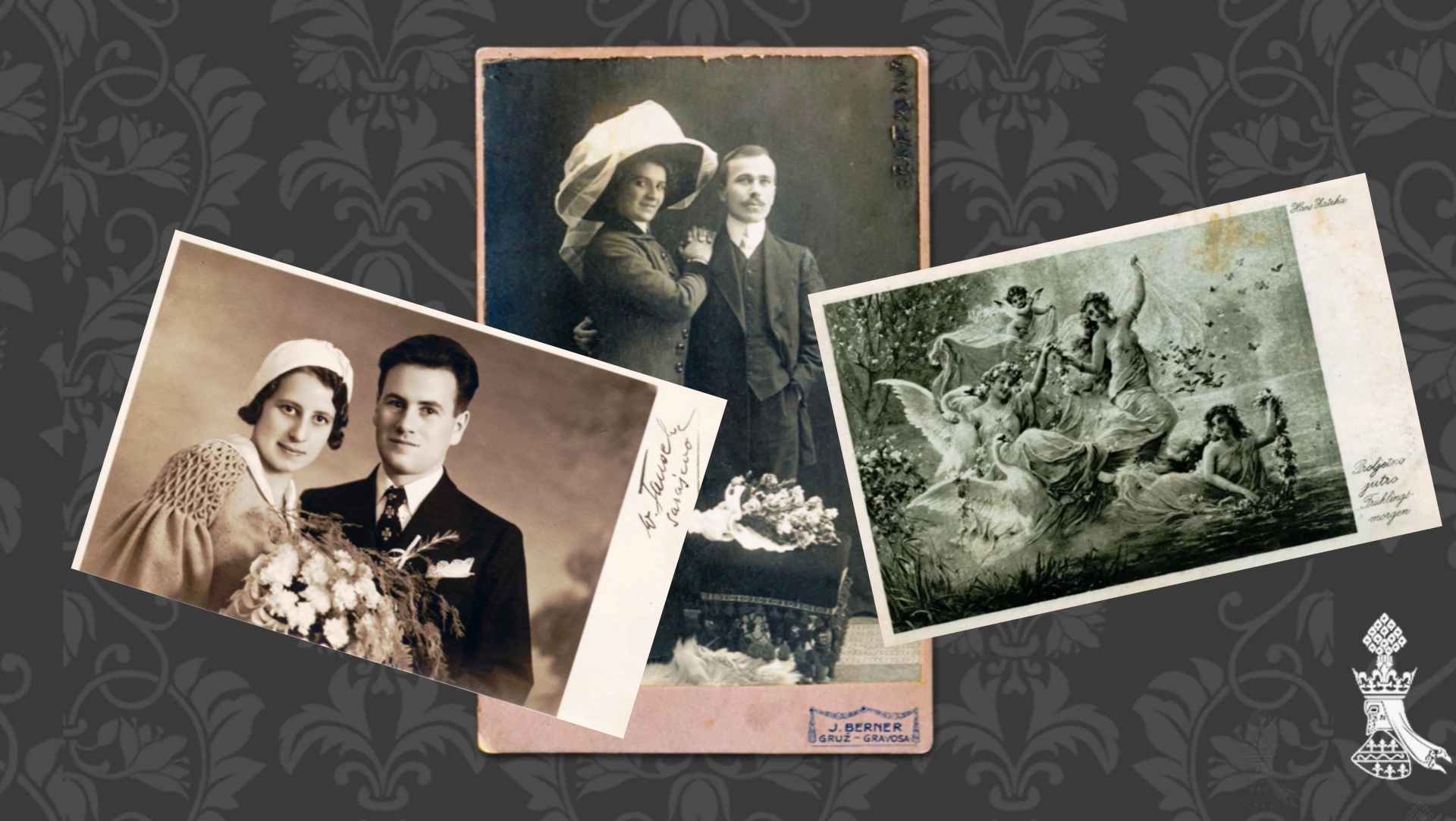
The celebration of International Museum Day and European Museum Night 2020 was celebrated at the Visoko Homeland Museum with an exhibition of photographs entitled, “Portrait of a Lady: Marica Vojnović Visočanka’ (1892–1982),” which represents the legacy of Marica Vojnović through objects and photographs from the late 19th and early 20th centuries.
The exhibit organizers, Dženana Arnautović and Habib Efendira-Čehić, show that photographs can reveal much about the time in which they were taken, the people photographed, and the photographers themselves.
Marica Vojnović: the Main Heroine
Marica Vojnović was born in 1892 in an Orthodox family originally from the Lika region in Croatia. Her guardian, Petar Vojnović, was a member of the Austro-Hungarian gendarmerie. He worked as a financier and was stationed in Visoko with his family at the turn of the 20th century. After his death in 1930, Marica inherited all of his property, and in her old age in 1981 she was placed in the Home for the Elderly in Nedžarići. She did not marry and left no family members behind.
We learn about her birth from the columns of the old Homeland of Orthodox families of the Church Municipality in Visoko, where her name and kinship – nephew – are written under the name of Petar Vojnović. It was important for Marica to be culturally and socially engaged throughout her life. Until the Second World War, one of the oldest Serbian Orthodox singing church societies, “Milutinović,” was active, and she was a member. In 1910, the emperor of the Austro-Hungarian Monarchy, Josip Franjo, came to visit Visoko, so a solemn reception was organized. Marica, as a member of this society, had the honor to sing the anthem, “Carevka,” for him. In addition, she was a member of the drama section of the multinational Sokol Society in Visoko, where she practiced amateur acting.

The People Behind The Photographs
The photographs found in the museum represent only a part of Marica’s legacy, which includes 185 inventory units registered under in the “Vojnović Collection“” and “World War II Period” funds. These include personal documents, newspaper articles, correspondence cards, and photographs. The most interesting are the old photographs from the turn of the century, which mostly come from photographic studios in today’s Bosnia and Herzegovina, Croatia, Serbia, and Montenegro. Upon studying these photographs, the museum learned that they many are from then-famous photographers from Sarajevo, Visoko, Visegrad, Dubrovnik, Karlovac, and Ruma. The names of the traveling photographer Seraphin Sperling, photographer and photojournalist Walter Tausch, Sarajevo portraitist Ivica Lisca, miniature portraitist Elektro-Fotofrag, and others were found in the collection.
Famous names also popped up in the collection of correspondence cards, with the most popular being Trifko Dudić from Mostar, S. B. Cvijanović from Belgrade, the German and Austrian publishing houses “Ross” and “Iris,” and the correspondence card of the French photographer Alfred Noyer.
The Photographs Find Their Home In The Museum
The photographic legacy of Marica Vojnović has been nurtured at the Visoko Museum since 1981. During inventory of all photographs and researching them was a tough process, as many photographs contained no information. It took more than a year of effort to achieve the final exhibition. Although this was her first encounter with photography, one of the creators of the exhibit, Dženana Arnautović, does not regret the time she spent working on it.
“This was my first encounter with photography, and I was able to see and experience the past, meet the actors, notice the details, the way of posing, see the places that have changed. It is impressive to experience the past through the lens of a photographer – from a passive observer you become active participants in the story.”
As the exhibit organizers revealed, the most difficult parts of the process were researching Marica’s biography, identifying the photographed persons and their relation to the owner, and determining the chronology of the photographic material. Therefore, they used all the material available to them, including dated and undated content on the back of the photographs, information on the materials’ authors, postal traffic, and archival material from public institutions. A significant amount of information was also given to them by Visoko citizens whose relatives were from the same period as Marica. All of this hard work was recognized by Alma Leka, the current director of the Sarajevo Museum and president of ICOM in BiH.
The authors managed to get in touch with the Mihaliček family, which was in close touch with the Vojnović family. The direct descendant of this family is Zoran Mihaliček, an architect, and his wife Marija Mihaliček, an art historian, who now live in Montenegro.
After revising the photographic material, the idea of the exhibition was born. The creators wanted to pay tribute to and preserve the memory of the Vojnović family from Visoko, especially Marica, who, as can be seen from the curated objects, was dignified and worthy of respect. For creator Habib Čehić-Efendir, the exhibition was of the crowning achievement of her work.
“Projects like this are rare in the Visoko Museum and that is why I am proud to have been a part of this interesting and useful research. As someone from Visoko, it is of great importance to me that our fellow citizens got involved in this project and that we established communication with the wider population. The exhibition is our token of gratitude to all these people.”







